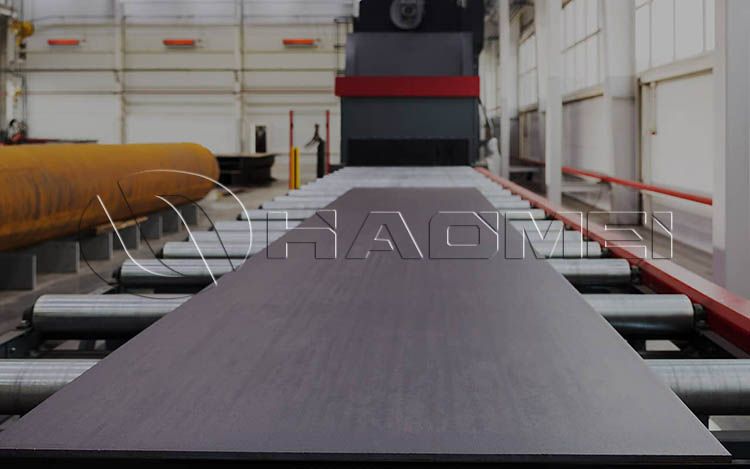Large Aluminum Plate Size for Fuel Tank
In the evolution of tank truck materials, aluminum tanker plates, with their inherent advantages such as low density, corrosion resistance, and ease of processing, have gradually replaced traditional steel as the mainstream choice. More importantly, tank truck manufacturing today clearly favors the use of large plate aluminum, a trend driven by both technological upgrades and market demand.
Currently, the thickness of mainstream large aluminum sheets for tank trucks is mostly concentrated between 2.0mm and 8.0mm—thin sheets are mainly used for light-load food transport tanks and drinking water tanks, while thicker sheets are suitable for hazardous chemical tanks, asphalt tanks, and other applications requiring higher strength.

The advantages of large aluminum sheets are particularly prominent in terms of length and width. Traditional small-size aluminum sheets are typically standard plates of 1220mm × 2440mm, while large aluminium plate size specifically for tank trucks have achieved "customized extensions," with common specifications reaching 1500mm × 6000mm and 1800mm × 8000mm. Some large tanks even use special-size aluminum sheets with a width exceeding 2000mm and a length within 10000mm.
In terms of materials, aluminum-magnesium alloys such as 5052, 5083, and 5A06 are the dominant materials. These alloy aluminum plates not only retain the lightweight characteristics of pure aluminum but also enhance strength and corrosion resistance through the addition of magnesium, perfectly matching the working environment of tank trucks that are in contact with various media for extended periods.
The core reason why tank truck manufacturers are turning to large aluminum plates is that they can solve many pain points of traditional small-size plates, bringing comprehensive performance improvements.
The most obvious benefit is the enhanced lightweight advantage. The lightweight of tank trucks directly affects transportation efficiency and fuel costs. Large-size aluminum plates reduce the number of plate splices, and fewer welds mean lower added weight—compared to tanks made of small-size aluminum plates, the weld weight of large-size aluminum plate tanks can be reduced by 15%-20%.
In addition, aluminum itself has only one-third the density of steel, resulting in a 5%-8% increase in the effective load of the tank truck. For logistics companies with huge annual transportation volumes, this is undoubtedly a significant cost saving.
Secondly, it improves the sealing and safety of the tank. Whether transporting hazardous chemicals or liquid food, the sealing of the tank is of paramount importance. When splicing small-sized aluminum plates, each additional weld seam increases the risk of leakage, while large aluminum plates significantly reduce the number of weld seams.
For example, in a 50-cubic-meter oil tanker, using 1800mm × 8000mm large-sized aluminum plates reduces weld length by more than 60% compared to standard small-sized plates. Simultaneously, fewer weld seams reduce the probability of defects such as slag inclusions and porosity during welding. Combined with the excellent corrosion resistance of aluminum-magnesium alloys, this effectively prevents leaks caused by weld corrosion, significantly improving transportation safety.
Large-sized aluminum plates also excel in processing efficiency and cost control. Traditional small-sized aluminum plates require frequent cutting, splicing, and welding processes, which are not only time-consuming and labor-intensive but also generate significant waste of scrap material—material utilization is typically only 75%-80%.
Large plate aluminum can be customized to the unfolded dimensions of the tank, increasing material utilization to over 90% and reducing waste costs. Simultaneously, the reduced number of welds directly shortens welding time, reducing the processing cycle of a single tank by 20%-30%, helping manufacturers increase production capacity and respond quickly to market orders.
Furthermore, large-size aluminum plates optimize the appearance and durability of the tank. A smoother tank surface with fewer welds not only enhances the product's aesthetics but also reduces erosion and wear on the welds during transportation, extending the tank's lifespan. For food and chemical tanks requiring regular cleaning, the smooth inner wall facilitates cleaning and reduces maintenance costs.
From an industry development perspective, the increasing demand for large-size aluminum plates for tank trucks has also driven advancements in aluminum plate production technology. Today, aluminum plate manufacturers can ensure uniform thickness in both length and width directions of large aluminum plates through processes such as wide-width rolling and precise temperature control, avoiding deformation problems caused by excessive size and providing a stable and reliable raw material support for tank truck manufacturing.
Original Source:https://www.aluminumtankerplate.com/a/large-aluminum-plate-size-for-fuel-tank.html
Tags: aluminum tanker plate ,
Prev:Development of Aluminum Alloy Tankers in Different Countries
